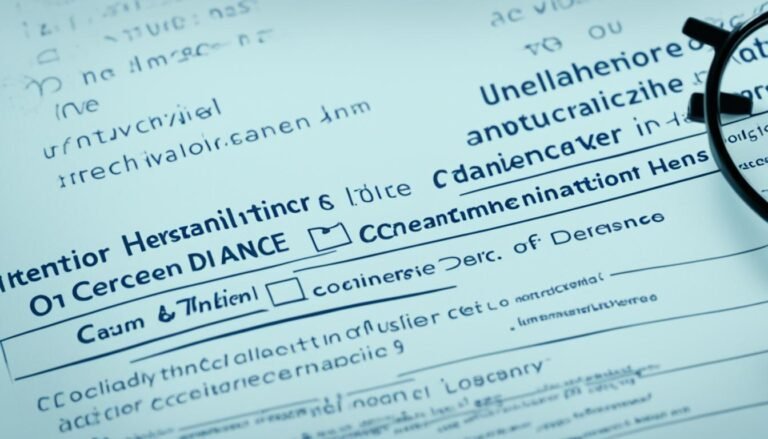Public Health (Alcohol) Act 2018: What Irish Healthcare Providers Need to Know
54% of people in the 2019 study were at a high risk with their drinking. This huge number shows how critical it is to have strong laws. The Public Health (Alcohol) Act 2018 is key. It makes sure healthcare workers know how to deal with alcohol issues.
The Public Health (Alcohol) Act started on October 17, 2018. It’s all about reducing problems linked to drinking. Irish healthcare professionals, focused on alcohol’s health effects, need to pay close attention. Especially now, with guidelines from April 2024 pushing for full compliance. This compliance is aimed at reducing the negative effects of alcohol, controlling its sale, and setting better prices.
Key Takeaways
- The Public Health (Alcohol) Act 2018 targets the large number of risky drinkers in Ireland.
- By May 22, 2026, all alcohol products must have health warnings on them.
- There are rules about advertising, especially for kids watching TV, to keep them away from alcohol ads.
- Setting a minimum price helps stop too much drinking.
- It’s important for healthcare workers to understand and follow the Act’s rules.
Introduction to the Public Health (Alcohol) Act 2018
The Public Health (Alcohol) Act 2018 is a big step in Ireland’s health laws. It shows the key link between how alcohol is controlled and public health in Ireland. This Act came from the National Substance Misuse Strategy to deal with problems alcohol brings to people, families, and the whole society.
Its goals are clear and wide-reaching. One big aim is to cut down alcohol use to 9.1 liters of pure alcohol a year per person. This shows a strong effort to reduce harmful use of alcohol.
The Act also wants to protect young people by putting off when they start drinking. It aims to stop alcohol problems before they start. This could help the health of everyone over time.
It also wants to lower the harm caused by drinking too much. By controlling how alcohol is sold and how much it costs, the aim is to reduce harm. For example, the Act sets a minimum price to prevent too much drinking.
One key part of the Act is the rules it sets. From stopping the sale of cheap alcohol to limiting ads, the goal is to encourage responsible drinking. Section 22, for example, says shops must keep alcohol away from other groceries since November 12, 2020.
Minimum pricing rules started on May 10, 2021, and were fully enforced on January 4, 2022. By setting these dates, the Act shows it means business. It also wants to make sure people know the risks of drinking too much.
The Public Health (Alcohol) Act 2018 is a major effort to handle problems linked to alcohol in Ireland. It mixes together controlling rules and teaching the public about healthy drinking. This all fits into Ireland’s health plans very well.
Primary Objectives and Policy Goals
The Public Health (Alcohol) Act 2018 is vital for public health efforts in Ireland, targeting critical alcohol issues. It aims to lessen heavy drinking, safeguard the at-risk, and control alcohol sales. This Act is key in battling many public health challenges related to alcohol.
Reducing Alcohol Consumption
The Act aims to lower yearly alcohol intake to 9.1 liters per person. It knows that less alcohol means better health and less harm from drinking. By setting consumption limits, the Act hopes to make Ireland healthier and cut healthcare costs.
Protecting Children and Young People
One big goal is to stop kids and teens from drinking too early. This helps them avoid future addiction and health troubles. The Act limits how alcohol is advertised and sold to minors, keeping them safe from starting too soon.
Minimizing Alcohol-Related Harm
Another aim is to cut down on alcohol’s many harms and health risks. The Act uses strategies such as health warnings on labels and education programs to warn the public. Its goal is to lower the bad effects of drinking too much.
Regulating Supply and Pricing
The Act controls how alcohol is sold and priced, focusing on safety. It sets a minimum price to reduce cheap, strong drinks’ appeal. Also, alcohol has to be in a separate area in stores. Activities like “buy one get one free” are banned. These rules help to keep alcohol away from easy, impulse buying.
- Reducing alcohol consumption to a target of 9.1 liters per person annually
- Delaying alcohol initiation among children and young people
- Mitigating alcohol-related harms through informed choices
- Implementing strict supply and pricing measures
| Objective | Initiative | Impact |
|---|---|---|
| Reduce Alcohol Consumption | Lower annual intake to 9.1 liters | Health improvement |
| Protect Youth | Delay alcohol initiation | Decrease early dependency |
| Minimize Harm | Health warnings and education | Reduce abuse and complications |
| Regulate Supply & Pricing | Minimum pricing and separation in retail | Discourage misuse and binge drinking |
Key Provisions of the Public Health (Alcohol) Act 2018
The Public Health (Alcohol) Act 2018 in Ireland brings in important measures to tackle drinking problems. It’s key for healthcare workers to know these rules. This way, they can make sure patients get the best care while following the law.
Minimum Pricing of Alcohol Products
The Act starts by setting a minimum price for alcohol. Since January 2022, it fights the sale of very cheap drinks. This aims to lower risky drinking by making cheap alcohol less available. The goal is to encourage healthier drinking habits across the country.
Mandatory Alcohol Product Labeling
Another rule is that alcohol products must have clear labels. These include health warnings and details on what’s in the drink. Most people, about 81.9%, liked this idea. It helps drinkers know more about the risks associated with alcohol. Plus, it meets healthcare rules.
Advertising and Sponsorship Restrictions
The Act also cracks down on how alcohol can be advertised and sponsored. It’s to keep alcohol from being pushed on kids. A big 85.1% agreed that ads near schools and childcare places should be banned. This is to protect young people and meet bigger health goals.
Separation and Visibility in Retail Settings
Stores must keep alcohol out of sight and not near other products. This is done to discourage people, especially kids, from buying alcohol on a whim. Making alcohol hard to see helps in following the rules about selling alcohol. This step is another big part of the Act.
The Public Health (Alcohol) Act 2018 doesn’t just set these rules. It offers a full plan to reduce alcohol’s harm. This includes steps on money, educating people, and controlling ads. Healthcare people need to keep up with these rules to help patients and meet public health goals.
Public Health (Alcohol) Act 2018: What Irish Healthcare Providers Need to Know
The Public Health (Alcohol) Act 2018 gives healthcare providers in Ireland big responsibilities. They must follow the Act to help reduce alcohol use and protect the public’s health. This means they must use the Act’s goals in their daily work and when they help patients.
Compliance Requirements for Healthcare Providers
Healthcare professionals need to stick to certain rules about selling and serving alcohol. It’s crucial to make sure everyone in their teams knows these rules. This is part of Ireland’s effort to deal with the problems that come from drinking alcohol.
- Make sure prices, where you can get alcohol, and how it’s advertised are as the law says.
- Keep alcohol separate and easy to see in healthcare places, which is required.
- Join in programs that help screen for and stop the bad effects from drinking too much.
Role in Patient Education
Healthcare workers also play a big part in teaching patients about the dangers of drinking too much. Teaching patients about the Act can really help cut down on alcohol’s bad effects. They should use things like social media and local projects to spread important news and raise knowledge.
- Tell patients about the dangers of drinking too much, including issues like FASD.
- Give patients true, science-backed details to help them make good choices.
- Help with local efforts to make people more aware and to encourage responsible drinking.
| Current Per Capita Alcohol Consumption | Target Per Capita Alcohol Consumption |
|---|---|
| 10.8 liters of pure alcohol | 9.1% as per Healthy Ireland Framework 2013-2025 |
If healthcare providers do these things, they can help meet the Act’s goals. This will help make the people healthier and more aware. Working on these initiatives is a key part of fighting the problems caused by alcohol in Ireland.
Impact on the Irish Healthcare Industry
The Public Health (Alcohol) Act 2018 is big news for Ireland’s healthcare sector. It brings on new rules and ways of doing things. With it, there are new challenges and chances in how healthcare is managed. We will look at how these changes affect the industry, especially in dealing with new rules and boosting public health projects.
Regulatory Challenges
Dealing with the Act of 2018 is tough for Irish healthcare. The Act means they must follow new rules, which isn’t easy. For example, in 2023, people in Ireland aged 15 and over used 9.9 liters of pure alcohol per person. This amount was a bit less than the year before. But back in 2019, it was even higher, at 10.8 liters. The government aimed to lower this to 9.1 liters by 2020. This shows why strong actions and actually putting the law into practice are so important.
Opportunities for Public Health Initiatives
The Act may be hard, but it also opens doors for better public health. In 2023, the Healthy Ireland Survey found people were drinking more, reaching 14.1 liters of alcohol each. It’s clear we need better alcohol policies based on what works. Over half the survey group backed these ideas. Even more, 85.1% said no to alcohol ads around schools and creches.
With such strong support, the healthcare field in Ireland has room to make good use of these new laws. Take the HSE Alcohol Programme, for example. It started in 2016 and aims to cut down on alcohol’s harm. They even have special lessons for students that talk about the dangers of drinking. This all supports a key goal: help people drink more responsibly and stay healthy.
The survey also tells us something important about who supports these rules the most. Women and people who know a lot about the risks of drinking are more likely to want strong rules. This kind of info is gold. It helps healthcare plan better, especially when it comes to spreading the word about health issues.
| Survey Year | Per Capita Alcohol Consumption | Unrecorded Alcohol Consumption | Public Support for Alcohol Policies |
|---|---|---|---|
| 2019 | 10.8 liters | 1.4 liters | 50% |
| 2023 | 14.1 liters (Drinkers) | Not available | 85.1% (Ban on advertising near schools) |
Commencement and Enforcement Details
The rollout of the Public Health (Alcohol) Act 2018 is a big deal for healthcare workers in Ireland. It aims to lower alcohol use and its harmful effects. To do this, everyone, especially those in healthcare, must follow this new law closely.
Timeline of Implementation
The Act’s rules started to apply in parts, over the years:
- November 2019: First parts of the Act kicked in.
- November 2020: More rules were added, like needing to separate alcohol in stores (Section 22).
- January 2021: New regulations were put in place.
- May 2021: Important sections were enforced.
- November 2021: The rules got stricter.
- January 2022: Minimum pricing for alcohol sales began.
By January 2025, all parts of the Act will be in full effect. Healthcare professionals need to be ready for more changes and rules.
Enforcement Mechanisms
This Act has strong enforcement to make sure people follow it right. There are several ways this is done, including:
- Fixed-Notice Payments: If someone doesn’t follow the rules, they face penalties right away.
- Published Noncompliance: The Health Service Executive (HSE) can tell the public about those who break the rules. This helps keep everyone honest.
- Regular Compliance Checks: The HSE regularly checks to see if everyone is following the Act properly.
The rules about how the Act is enforced might change as time goes on. This highlights its heavy impact on healthcare workers. They must keep up with their duties under this law.
Conclusion
The Public Health (Alcohol) Act 2018 is a big deal in solving alcohol problems in Ireland. This law has strict rules to deal with issues caused by drinking. With many Irish adults drinking a lot of alcohol each year, it shows why we need to act now. In 2019, each Irish adult drank about 10.8 liters of pure alcohol. Also, half of Irish drinkers are seen as risky drinkers. This shows how urgent it is to follow the Act’s rules.
Health workers in Ireland now have a big, important job to do. They must work to support the Public Health (Alcohol) Act 2018. One worry is that many young people drink a lot at once. For example, over 60% of young men and people ages 15 to 24 do this. The Act wants to lower drinking and the harm it causes. This will make Ireland healthier for everyone.
In the end, Irish health workers will lead in making the Act a success. They will help create a healthier future for Ireland. By following the Act’s rules, health workers can lower the cost of drinking problems. This cost more than €2.35 billion in 2015. By doing so, they can improve the health and happiness of all Irish people.
Source Links
- Healthcare in the Republic of Ireland
- Awareness of alcohol marketing one year after initial implementation of Ireland’s Public Health (Alcohol) Act and during the COVID-19 pandemic
- The implementation of a public health alcohol policy in Ireland | Irish Journal of Psychological Medicine | Cambridge Core
- Support for evidence-based alcohol policy in Ireland: results from a representative household survey
- Alcohol Programme – HSE.ie
- Waiting for the wave: Political leadership, policy windows, and alcohol policy change in Ireland
- Averting an alcohol crisis | HSC Public Health Agency
- Alcohol Consumption in Ireland | Drinkaware








